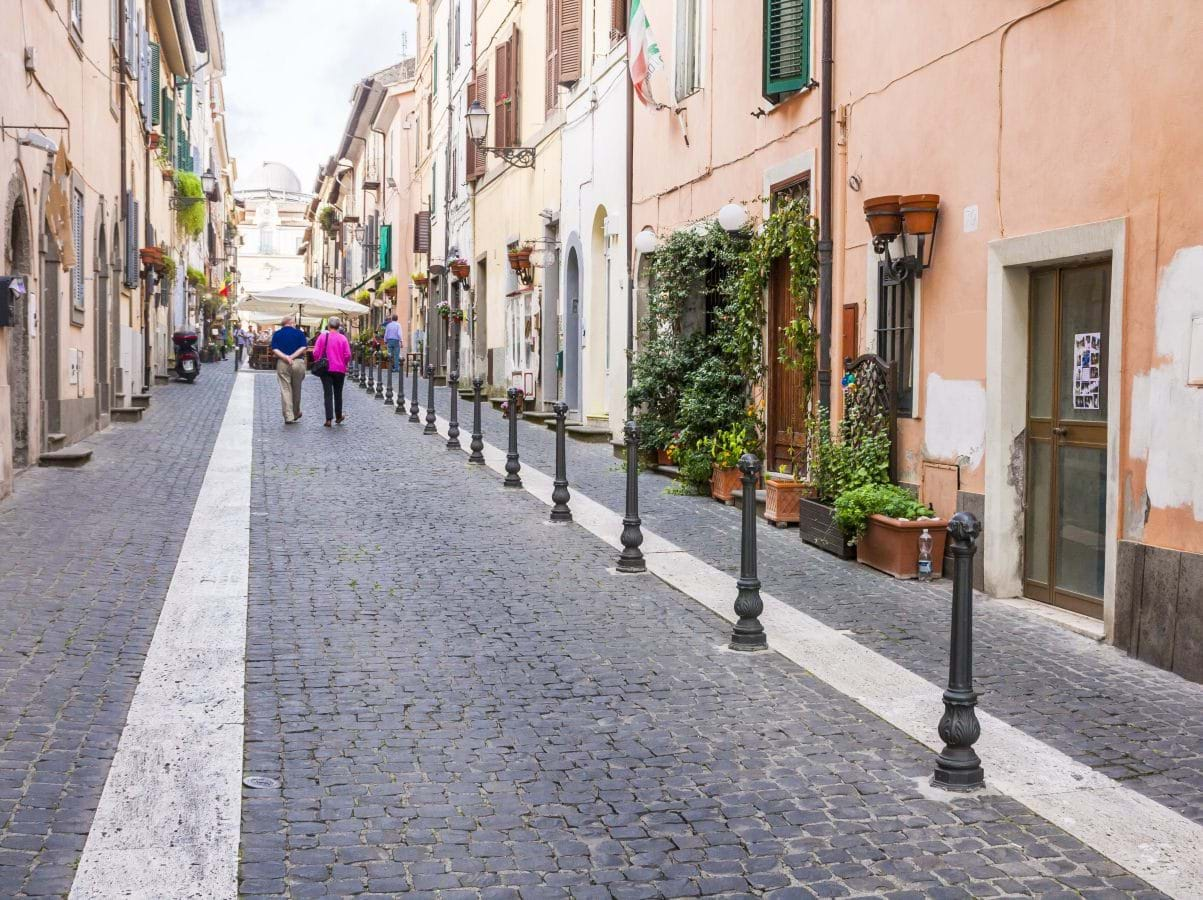Come August most of the citizens of Rome (and the rest of Italy) are on vacation, and for good reason too – it’s hot enough to fry eggs around the Ancient City most days. The upside of this is that the city is a little less crowded than it would be otherwise and public transport is a lot less sweaty. If you have a day or two to spare during your Rome visit though, or if you just can’t face another day of queuing under the baking hot sun, consider taking a leaf from the locals’ book and head for the hills for your own Roman holiday.
A mere 20km south-east of Rome Castelli Romani, isn’t a set of castles but rather a group of 13 towns in the Alban Hills that have provided respite for Romans since the days of the Colosseum. Thanks to their volcanic soils the Castelli Romani are incredibly fertile areas known far and wide for their locally produced wines and strawberries. A breath-taking panorama of lush valleys and crystal lakes, the region is pretty easy on the eye too, making it a rounded getaway for foodies, lovers, and families alike.

Villa Aldobrandini in Frascati, for example!
Most visitors stick to two areas. The first is the Frascati region which you may recognize as the home of Frascati wines. This is the main production area for Castelli Romani wines which in turn are some of the most trustworthy staples of Roman wine bars and restaurants. Wines from this region are quite easy-going, mostly light on the palate and (happily) on light on the wallet too. The day-to-day choice of Romans, Frascati wines are a popular choice for trattoria and osteria house wines. It’s hardly surprising then that the biggest draw to Frascati and maybe the whole of Castelli Romani, is the chance of a visit to and lunch in a local vineyard. If you’re interested in taking a Frascati wine tour, check out our wine-and-lunch guided group tour here. Or for more information on the area and the wines see our Frascati blog post here.

Streets around Castel Gandolfo
The other go-to spot in the Castelli Romani is Castel Gandolfo. This is where the Pope summers in his 17th-century summer palace and the general opinion is that if it’s good enough for him, it’s good enough for everyone else. While the Pope holds audience here during July and August, it is impossible to gain access to the palace, its grounds or the Villa Barberini at any time of the year. That said, the main piazza, church and a Barberini fountain are well worth the short trip in their own right. In the summer months, however, the star of the show isn’t the cobblestone town itself, but rather its location. Sitting on the top of a hill, Castel Gandolfo overlooks Lago di Albano, a huge lake where Romans come to swim, sail and sunbathe on the shore. In the stifling heat of the Italian summer, there are few better escapes than to jump up off of a sun lounger and run straight into the lake’s refreshing waters. Go to the opposite side of the lake for stunning views of the lake and papal castle in the background.
While Frascati and Castel Gandolfo may be the main draws, they are by no means the only gems in Castelli Romani’s crown. Lago di Nemi is a quieter spot that is no less worth a visit. Less busy and smaller than Lago di Albano, Nemi is famous for the strawberries grown on its shores which are said to be among the best in Europe. The lake itself has an interesting history too. In the 1st century, Caligula built huge extravagant barges to float on the lake. With his usual decadence, he fitted them out in bronze, marble and the best of everything. As it turns out, he also fitted them with the heaviest of everything and the boats soon sunk to the bottom of the lake where they stayed until Mussolini drained the lake and discovered them. He stuck them in a museum, and they were considered one of the wonders of Ancient Rome until the Nazis burned them as a leaving present. The museum in town now houses scale models of the barges, and since the admission price is a pittance, they’re well worth a visit.
Ariccia is one of the quieter of the Castelli Romani with a real, lived-in feel; the central castle is still private property. For views, consider Genzanzo and Tuscola, the latter of which has a 1st-century amphitheater and one of Italy’s most beautiful panoramas, taking in the lakes, Castelli Romani and even the sea beyond – best viewed at sunset.
While the best way to see Frascati is on an organized day tour, it’s worth renting a car and driving around the rest of the region if you have a second day to visit. Some of the towns are serviced by Cotral bus routes, and Lago di Albano is accessible by train from Rome’s Termini Station, but the smaller towns and attractions are usually difficult and often downright impossible to reach without private transport.
Check out our full list of day tours from Rome today!


